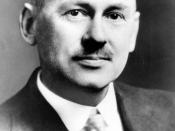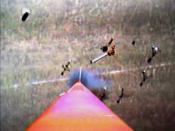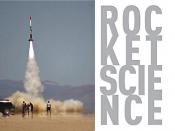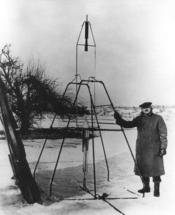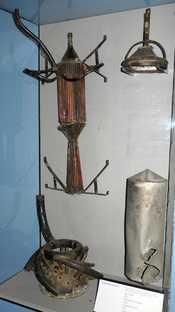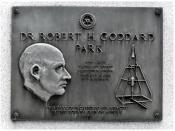Rocketry The History Of Rockets The first known date that rockets were used was the year 1232. At this time, the Chinese and the Mongols were at war with each other. During a battle, the Chinese kept the Mongol invaders back bye using things they called of "arrows of flying fire." These fire-arrows were a simple solid-propellant rocket. A tube, closed at one end, was stuffed with gunpowder. The back end was left open and the tube was attached to a long pole. When the powder was ignited, the fast burning of the powder produced fire, smoke, and gas that came out the open end and produced a push that made it go. The stick acted as a simple guidance system that kept the rocket headed in one general direction as it flew through the air. It is unknown how effective these primitive rockets were as weapons of destruction, but their psychological effects on the Mongols must have been amazing.
Relating Rockets To Motion And Forces An unbalanced force must be exerted for a rocket to lift off from a launch pad, change speed or direction (first law). The amount of thrust (force) produced by a rocket engine will be decided by the mass of rocket fuel that is burned and how fast the gas comes out of the rocket (second law). The reaction of the rocket is opposite to the propellant, which comes out of the rocket (Third law).
Rocket Construction This is an example of Robert Goddard's (a very important man in the field of rockets) single propellant rocket he first used in 1926. I chose to use Roberts Design because Nasa Rocket Construction Information is classified and Goddard's Design is simple and easy to decipher. There was a pipe connection for the gas between the oxygen tank and the gasoline tank. Safety required that neither liquid should pass through this pipe and mix with the other before entering the combustion chamber. Dr. Goddard used a simple pull cork to stop the mixing from happening to early. Once the rocket left the ground, this gas pressure would be the only means for pumping fuel and oxygen. Before launch, it was necessary to pressurize the system from an oxygen cylinder located about 30 feet from the rocket.
